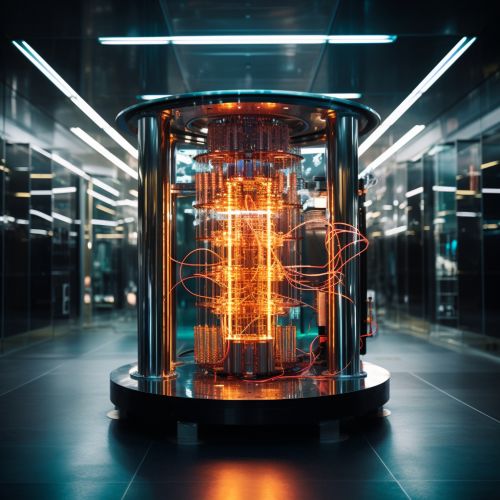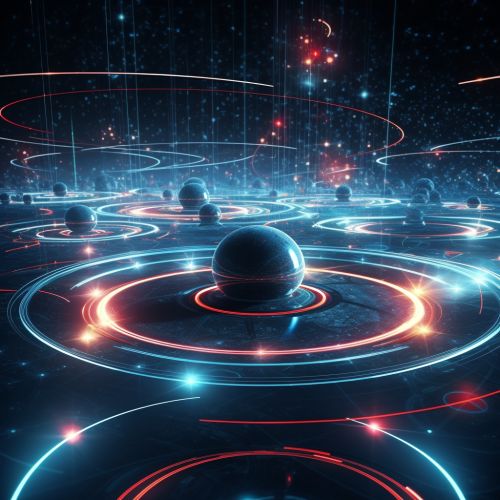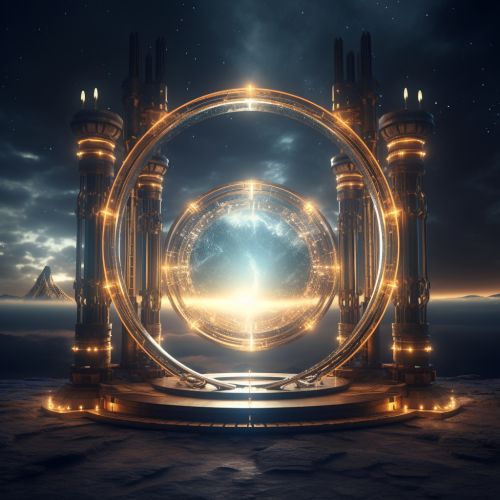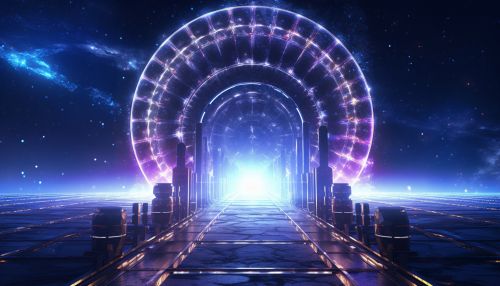Quantum Computing
Introduction
Quantum computing is a field of study focused on the development and application of quantum computers, which are designed to use quantum bits, or "qubits", as their fundamental data unit. Unlike classical bits, which can be either a 0 or a 1, a qubit can be in a superposition of states, allowing it to perform multiple calculations simultaneously. This property, along with quantum entanglement and quantum tunneling, allows quantum computers to solve certain problems much more efficiently than classical computers.


Quantum Bits
The fundamental unit of quantum information is the qubit. Unlike classical bits, a qubit can exist in a superposition of states, meaning it can represent a 0, a 1, or any quantum superposition of those two qubit states. This is a key difference between classical and quantum computing. In a classical system, a bit would have to be in one state or another. However, quantum mechanics allows the qubit to be in a superposition of both states at the same time, a property which is fundamental to quantum computing.
Quantum Superposition
Superposition refers to the quantum phenomenon where a quantum system can exist in multiple states simultaneously. When a measurement is made on a quantum system, the system 'collapses' from the superposition state to one of the eigenstates and the superposition is lost. This property of quantum systems is what allows quantum computers to work on a large number of computations at once.


Quantum Entanglement
Another key principle of quantum computing is entanglement, a phenomenon where two qubits become linked, such that the state of one qubit is directly related to the state of the other, no matter the distance between them. This property is used in quantum computing to link qubits together in a way that increases the computational power of the quantum computer.
Quantum Gates
Quantum gates are the basic building blocks of quantum circuits. They operate on a small number of qubits, changing their quantum state in a way that is determined by the gate's quantum mechanics. Quantum gates are analogous to classical logic gates, but their operation can be reversible, which is a key feature of quantum algorithms.


Quantum Algorithms
Quantum algorithms are a set of instructions to be executed on a quantum computer. Some of the most well-known quantum algorithms include Shor's algorithm for factoring and Grover's algorithm for search. These algorithms can provide a significant speedup over their classical counterparts.
Quantum Error Correction
Due to the fragile nature of quantum states, errors can easily occur in quantum computations. Quantum error correction is a set of techniques to protect quantum information from errors due to decoherence and other quantum noise. Quantum error correction is a crucial aspect of quantum computing and is necessary for scalable quantum computers.


Quantum Computing and Cryptography
Quantum computing has significant implications for cryptography. Quantum algorithms, such as Shor's algorithm, can break many of the cryptographic algorithms currently in use. This has led to the development of post-quantum cryptography, which aims to develop cryptographic systems that are secure against both classical and quantum computers.
Future of Quantum Computing
The future of quantum computing is promising, with many companies and research institutions currently developing quantum computers. However, there are still many challenges to be overcome, such as improving qubit coherence times, developing scalable quantum computers, and creating quantum software.


